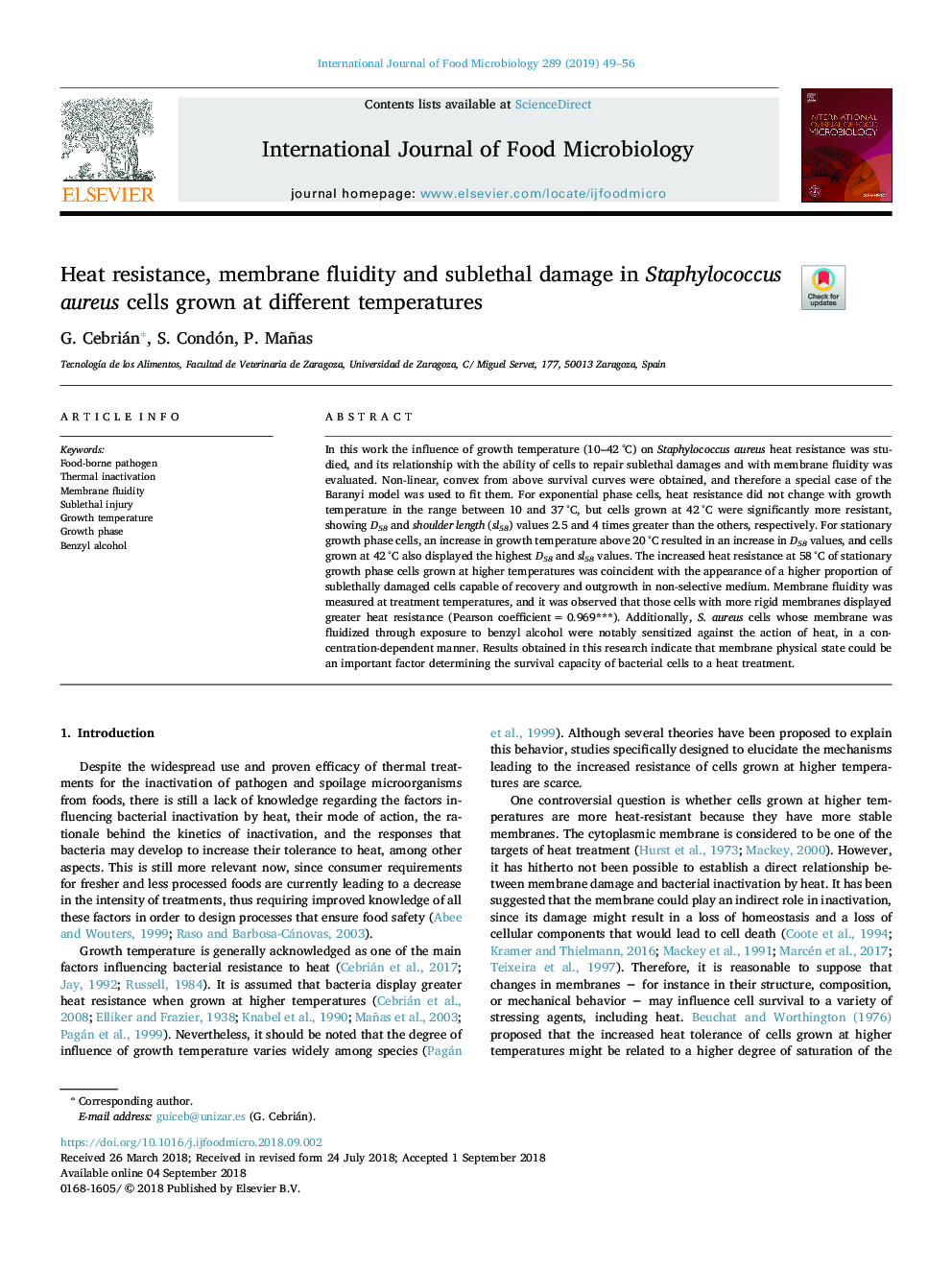| Article ID | Journal | Published Year | Pages | File Type |
|---|---|---|---|---|
| 8965860 | International Journal of Food Microbiology | 2019 | 8 Pages |
Abstract
In this work the influence of growth temperature (10-42â¯Â°C) on Staphylococcus aureus heat resistance was studied, and its relationship with the ability of cells to repair sublethal damages and with membrane fluidity was evaluated. Non-linear, convex from above survival curves were obtained, and therefore a special case of the Baranyi model was used to fit them. For exponential phase cells, heat resistance did not change with growth temperature in the range between 10 and 37â¯Â°C, but cells grown at 42â¯Â°C were significantly more resistant, showing D58 and shoulder length (sl58) values 2.5 and 4 times greater than the others, respectively. For stationary growth phase cells, an increase in growth temperature above 20â¯Â°C resulted in an increase in D58 values, and cells grown at 42â¯Â°C also displayed the highest D58 and sl58 values. The increased heat resistance at 58â¯Â°C of stationary growth phase cells grown at higher temperatures was coincident with the appearance of a higher proportion of sublethally damaged cells capable of recovery and outgrowth in non-selective medium. Membrane fluidity was measured at treatment temperatures, and it was observed that those cells with more rigid membranes displayed greater heat resistance (Pearson coefficientâ¯=â¯0.969***). Additionally, S. aureus cells whose membrane was fluidized through exposure to benzyl alcohol were notably sensitized against the action of heat, in a concentration-dependent manner. Results obtained in this research indicate that membrane physical state could be an important factor determining the survival capacity of bacterial cells to a heat treatment.
Keywords
Related Topics
Life Sciences
Agricultural and Biological Sciences
Food Science
Authors
G. Cebrián, S. Condón, P. Mañas,
